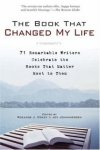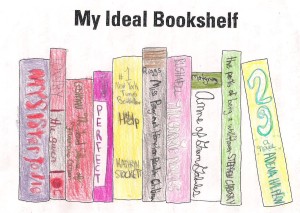For the last few years, readers have jumped on Jamie’s End of year Book Survey bandwagon (or perhaps I should say ‘bookwagon’) and I am nothing if not a lemming.
Number of Books You Read: 27 “adult” novels, 21 YA, 3 graphic, 2 memoirs, 1 non-fiction for a total of 55, well short of my goal of 65 books
See my shelf here
Number of Books You Re-Read: 0
Genre You Read The Most From: Contemporary
Best Book You Read In 2014?
(If you have to cheat — you can break it down by genre if you want or 2014 release vs. backlist)
Best YA: More Than This – Patrick Ness
Best Other: Life After Life – Kate Atkinson
Book You Were Excited About & Thought You Were Going To Love More But Didn’t?
Heading Out to Wonderful – Robert Goolrick
Most surprising (in a good way or bad way) book you read in 2014? I read a lot of duds this year, more than normal: Creep, Firefly Rain, The Birthing House , Kiss Crush Collide
Book You “Pushed” The Most People To Read (And They Did) In 2014?
More Than This – Patrick Ness
Best series you started in 2014? Best Sequel of 2014? Best Series Ender of 2014?
Not a series starter, generally, although I have started a couple that I really need to finish – none of them in 2014, though.
Favorite new author you discovered in 2014?
I discovered a few new authors this year that I will definitely be looking to read more from: Megan Abbott, Tammara Webber, Erin Kelly
Best book from a genre you don’t typically read/was out of your comfort zone?
Nada – I’m up for just about anything with the exception of sci fi/fantasy…and since I’m not really into it, I don’t read it.
Most action-packed/thrilling/unputdownable book of the year?
The Lantern – Deborah Lawrenson Certainly not action-packed, but this was a real page-turner and a lot of fun to read.
Book You Read In 2014 That You Are Most Likely To Re-Read Next Year?
I really wish I had more time for re-reading. I would like to re-read A Tree Grows in Brooklyn in 2015. It’s probably been 40 years since I read that book and I just remember loving it.
Favourite cover of a book you read in 2014?
 My Ideal Bookshelf – Thessaly La Force and Jane Mount
My Ideal Bookshelf – Thessaly La Force and Jane Mount
I loved everything about this book.
Most memorable character of 2014?
Addy Hanlon from Megan Abbott’s Dare Me. Caustic and compelling.
Lucas from Tammara Webber’s Easy. Hot. Hot. Hot.
Most beautifully written book read in 2014?
Life After Life – Kate Atkinson
Most Thought-Provoking/ Life-Changing Book of 2014?
The Children Act – Ian McEwan. McEwan always gives you something to think about.
Book you can’t believe you waited UNTIL 2014 to finally read?
Miss Peregrine’s Home for Peculiar Children – Ransom Riggs
My own kids were always after me to read this book when it first came out, but it wasn’t until the teachers in my department suggested this book for a teachers’ book club that I got around to reading it. Loved it.
Favorite Passage/Quote From A Book You Read In 2014?
““What if we had the chance to do it again and again, until we finally did get it right? Wouldn’t that be wonderful.” Teddy from Life After Life I’m not in the habit of writing down passages that I like, but this quote – which is central to Atkinson’s novel – also resonates with me for other reasons.
Shortest & Longest Book You Read In 2013?
Alia’s Mission: Saving the Books of Iraq, 32 pages
Life After Life – Kate Atkinson, 544 pages
Book That Shocked You The Most (Because of a plot twist, character death, left you hanging with your mouth wide open, etc.)
The Raft – S.A. Bodeen. Didn’t see that coming!
OTP OF THE YEAR (you will go down with this ship!)
Hands down: Jacqueline and Lucas from Tammara Webber’s Easy
(OTP = one true pairing if you aren’t familiar)
Favorite Non-Romantic Relationship of The Year
Seth, Regine and Thomasz of Patrick Ness’s More Than This
Favorite Book You Read in 2014 From an Author You’ve Read Previously
More Than This – Patrick Ness
Best Book You Read In 2014 That You Read Based SOLELY On A Recommendation From Somebody Else/Peer Pressure:
None – it’s not the way I generally choose books
 Newest fictional crush from a book you read in 2014?
Newest fictional crush from a book you read in 2014?
I have to admit that I fell in love with Joe Bunch, the 13-year-old protagonist of Totally Joe. He is a great character.
Through the Woods – Emily Carrol
Best Worldbuilding/Most Vivid Setting You Read This Year?
Tie between The Coldest Girl in Cold Town – Holly Black
and
More Than This – Patrick Ness
Book That Put A Smile On Your Face/Was The Most FUN To Read?
My Ideal Bookshelf – Thessaly La Force and Jane Moun
Book That Made You Cry or Nearly Cry in 2014?
There were lots of lump in the throat moments in Life After Life
Hidden Gem Of The Year?
 The Ice Cream Girls – Dorothy Koomson Maybe this book got a lot of love when it came out, but I’d never heard of it nor the author. It is well-written and a real page-turner, too
The Ice Cream Girls – Dorothy Koomson Maybe this book got a lot of love when it came out, but I’d never heard of it nor the author. It is well-written and a real page-turner, too
Book That Crushed Your Soul?
Living Dead Girl – Elizabeth Scott
It was so bleak
Most Unique Book You Read In 2014?
Miss Peregrine’s Home for Peculiar Children – Ransom Riggs
It maximized quirky photos and a unique story. I really enjoyed it
Book That Made You The Most Mad (doesn’t necessarily mean you didn’t like it)?
 The Birthing House – Christopher Ransom
The Birthing House – Christopher Ransom
Utter Crap! And a frustrating waste of time. I can’t believe I actually read the whole thing.

New favorite book blog you discovered in 2014?
Electric Lit – although I guess it’s not strictly a book blog.
Favorite review that you wrote in 2014?
The Coldest Girl in Coldtown – Holly Black
Best discussion/non-review post you had on your blog?
I loved that I got to share how I used My Ideal Bookshelf in the classroom.
Best event that you participated in (author signings, festivals, virtual events, memes, etc.)?
I was very lucky to welcome best-selling Canadian novelist Kelly Armstrong into my classroom in October. She was in town to participate in FogLit, a literary festival, and came to my school to speak with about 70 students and then work with about 20 in a small group setting. There were sooo many excited students at school that day!
my classroom in October. She was in town to participate in FogLit, a literary festival, and came to my school to speak with about 70 students and then work with about 20 in a small group setting. There were sooo many excited students at school that day!
Best moment of bookish/blogging life in 2014?
Another cool, bookish thing that happened in 2014 was that I started doing book columns on CBC Radio’s Information Morning in October 2014. I love talking about books and this is a really fun gig. You can listen to past columns by clicking on the links in the sidebar.
Most Popular Post This Year On Your Blog (whether it be by comments or views)?
This post got the most views all year I credit Ryan Gosling. 
Post You Wished Got A Little More Love?
I’d love to have a little more interaction overall on my blog, but I do it because I love to do it – not for site stats…so it’s all good. That said, I loved sharing this activity I did with some grade ten students and wish it had received a little more attention.
Best bookish discovery (book related sites, book stores, etc.)? I am looking forward to diving into this post from the Guardian: Top Ten Best Book Bloggers – all YA.
Did you complete any reading challenges or goals that you had set for yourself at the beginning of this year?
I intended to read 65 books this year – just up from the total of 62 I read last year, but I didn’t make it – for a variety of reasons.
 One Book You Didn’t Get To In 2014 But Will Be Your Number 1 Priority in 2015? Oh, please.
One Book You Didn’t Get To In 2014 But Will Be Your Number 1 Priority in 2015? Oh, please.
Book You Are Most Anticipating for 2015 (non-debut)?
You Are Most Anticipating for 2015 (non-debut)?
My son gave me J.J. Abrams and Doug Dorst’s novel Ship of Theseus for Christmas. We’ve long been intrigued by this books, so I am looking forward to reading it.
2015 Debut You Are Most Anticipating
No idea.
Series Ending/A Sequel You Are Most Anticipating in 2015?
I would like to make it a priority to finish Ilsa J. Bick’s Ashes trilogy, Kelley Creagh’s Nevermore Trilogy and Suzanne Collins’ Hunger Games trilogy. There. I said it. Of course, none of these are new series.
One Thing You Hope To Accomplish Or Do In Your Reading/Blogging Life In 2015
Setting goals for myself in this regard is just asking for trouble
A 2015 Release You’ve Already Read & Recommend to Everyone. Nope.
Interested in reading more End of Year surveys? Go here.









![shelfsiscoverylittler_thumb[2]](https://theludicreader.files.wordpress.com/2014/11/shelfsiscoverylittler_thumb2.jpg?w=94&h=150)








